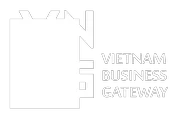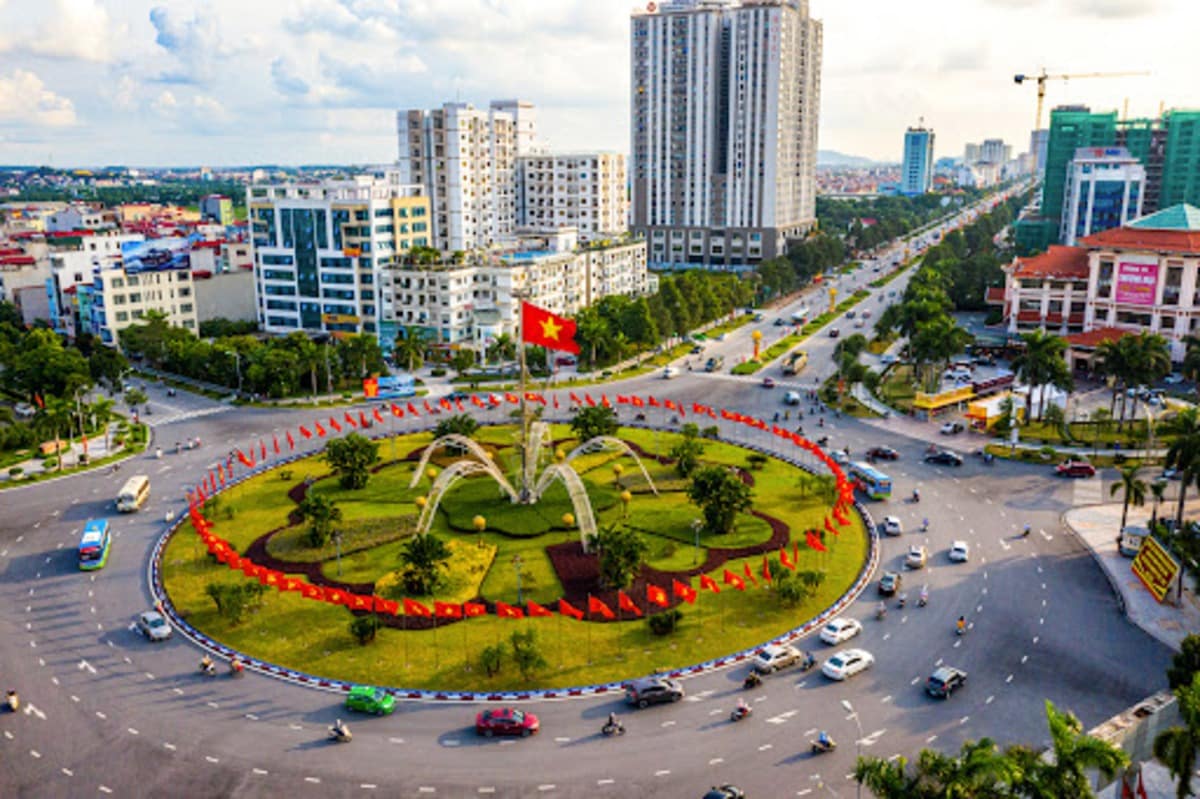Bac Ninh Province is emerging as a key destination for foreign investment, particularly in manufacturing and high-tech sectors, due to its strategic location and supportive policies. This article provides an in-depth analysis of the conditions and requirements for foreign investors planning to establish a company in Bac Ninh Province, Vietnam. It covers location and infrastructure, economic potential, investment support policies, promising sectors, legal factors, risks and challenges, practical insights, and business culture. We also incorporate experiences from businesses already operating in the province, offering key considerations for investment decisions.
Why Bac Ninh Should Be Your Next Destination for Manufacturing?
Over the past two decades, Bac Ninh has evolved from an agricultural region into a thriving high-tech manufacturing hub, attracting global giants such as Samsung, Canon, and Foxconn, who have collectively invested billions of dollars. This transformation underscores the province’s appeal as a business-friendly environment primed for industrial success.
Strategic Location and Infrastructure
Bac Ninh’s proximity to key transportation hubs enhances its logistical appeal:
- 30 km from Hanoi, Vietnam’s capital, providing access to urban markets and resources.
- 40 km from Noi Bai International Airport, facilitating international connectivity.
- 100 km from Hai Phong seaport, a major export gateway.
The province hosts 15 industrial parks and will soon have 21 industrial parks after merging with Bac Giang Province, including the renowned Vietnam-Singapore Industrial Park (VSIP), offering modern facilities tailored for high-tech production. In 2021, Bac Ninh’s industrial production value reached nearly 1.5 quadrillion VND (approximately 42 billion USD), and its gross regional domestic product (GRDP) per capita ranked fourth in Vietnam, reflecting a strong and dynamic economy.
Attractive Incentives and Sustainability Focus
Bac Ninh offers compelling financial incentives to manufacturers, particularly in high-tech sectors:
- A preferential corporate income tax (CIT) rate of 10% for 15 years.
- Additional tax holidays and reductions for projects in socio-economically disadvantaged areas.
- Land rental exemptions, reducing operational costs.
These benefits make Bac Ninh a cost-effective choice for companies seeking to establish or expand manufacturing operations.
The provincial government actively supports industrial growth while emphasizing sustainable development. Bac Ninh is prioritizing green industries and smart technology, aligning with global trends toward eco-friendly manufacturing. This commitment ensures that businesses can operate responsibly while benefiting from a forward-thinking regulatory environment.
Economic Potential and Market
Bac Ninh is a leading industrial hub in northern Vietnam, excelling in electronics, manufacturing, and processing industries. It hosts major corporations like Samsung, Canon, and Foxconn, with electronics being a key sector. The province’s GRDP growth rate was 7.39% in 2022, with projections indicating continued high growth, driven by significant FDI inflows, particularly in high-tech manufacturing. In 2024, it attracted over $4.2 billion in FDI from January to September, leading the nation.
The labor force, with over 1.3 million people and 60% of working age, is young and abundant, with vocational schools and universities producing skilled technical workers. However, competition for highly skilled labor in electronics and engineering is intense, with companies like Foxconn noting the need for competitive wages and training programs to retain talent.
Bac Ninh boasts a young and abundant labor force, a critical asset for labor-intensive manufacturing. While the workforce may require further training for high-tech fields, the province’s potential to develop skilled workers positions it as a reliable long-term partner for manufacturers.
In summary, Bac Ninh’s strategic location, modern infrastructure, generous incentives, government backing, and focus on sustainability make it an ideal destination for manufacturing. Its proven track record with global companies and high economic output further solidifies its status as a top choice.
Bac Ninh’s Future Plans
Bac Ninh is not content to rest on its current achievements; it has ambitious plans to become a leader in high-tech industries and innovation over the coming decades. The province’s leadership has outlined a clear vision for its future development.
By 2030: A High-Tech Manufacturing Leader
Bac Ninh aims to establish itself as Vietnam’s leading center for processing, manufacturing, and high-tech services by 2030. Key priorities include:
- Semiconductors and electronics: Positioning Bac Ninh as a hub for these critical industries.
- High-tech equipment: Attracting investment in advanced manufacturing technologies.
- Development of a 260-hectare concentrated information technology area to support innovation and production.
The province is targeting investment from advanced industrial regions such as Japan, South Korea, and the European Union, leveraging its existing relationships with companies like Samsung to drive this growth.
By 2050: A Hub for Innovation and Research
Looking further ahead, Bac Ninh aspires to become a regional hub for innovation, research, and development in Southeast Asia by 2050. This vision includes:
- Integration into the regional semiconductor ecosystem, capitalizing on global demand for chips and related technologies.
- Fostering a culture of research and innovation, supported by investments in education and training to upskill its workforce.
- Strengthening its role as a leader in high-tech industries, ensuring long-term competitiveness.
Supporting Sustainable Growth
Bac Ninh is taking significant strides to balance its rapid economic progress with environmental responsibility, ensuring that its industrial expansion aligns with global sustainability standards. The province, a key industrial hub in Vietnam, is focusing on green industries and the adoption of smart technologies to minimize environmental impact while maintaining its attractiveness to forward-thinking manufacturers in high-tech sectors such as semiconductors and electronics.
One of the cornerstone initiatives in this effort is the development of eco-industrial parks. These parks are designed to promote sustainable manufacturing by optimizing resource use and improving waste management. For instance, Bac Ninh is investing in a new green industrial park, which prioritizes environmentally friendly production processes. This project includes advanced infrastructure like centralized wastewater treatment plants and recycling programs to reduce industrial waste, reflecting the province’s proactive approach to sustainability.
In addition, Bac Ninh is advancing its commitment to renewable energy as part of its green growth strategy. A notable example is the construction of a solar power plant intended to supply clean energy to its industrial parks. This initiative reduces reliance on fossil fuels and contributes to lowering carbon emissions, aligning with Vietnam’s national goals for sustainable development. Reports indicate that Bac Ninh aims to achieve a 20% reduction in carbon emissions by 2030, a target supported by such renewable energy projects.
The province is also leveraging smart technology to enhance sustainability in its manufacturing sector. A pilot smart factory project is currently underway, integrating Artificial Intelligence (AI) and the Internet of Things (IoT) to optimize production processes. These technologies improve energy efficiency, reduce waste, and monitor environmental parameters in real time, positioning Bac Ninh as a participant in Vietnam’s broader push toward Industry 4.0 and digital transformation. This adoption of smart systems not only boosts productivity but also underscores Bac Ninh’s role as a leader in innovative, eco-friendly industrial practices.
Bac Ninh’s efforts are part of a larger national framework, as Vietnam promotes green growth and sustainable industrial development. By aligning with these priorities and global sustainability standards, the province enhances its appeal to international investors who prioritize environmental responsibility. These initiatives demonstrate Bac Ninh’s dedication to creating a sustainable economic model that supports long-term growth without compromising ecological integrity.
Workforce Development
To fuel its ambitions in high-tech industries such as semiconductors, electronics, and information technology, Bac Ninh is making substantial investments in education and training programs. Recognizing that a skilled workforce is critical to sustaining its economic momentum, the province is equipping its young population with the technical expertise required to meet the demands of these rapidly evolving sectors.
At the heart of this effort are Bac Ninh’s vocational training centers, which provide specialized courses tailored to high-tech industries. The Bac Ninh College of Industry, for example, offers programs in semiconductor technology, automation, and information technology, equipping students with practical skills for advanced manufacturing. These institutions serve as a vital pipeline, producing graduates ready to contribute to the province’s industrial ecosystem.
Bac Ninh has also fostered strategic partnerships with industry leaders to bridge the gap between education and employment. A prime example is the collaboration with Samsung, a major employer in the region, which operates a technical training center in Bac Ninh. This facility provides hands-on training in electronics manufacturing and maintenance, ensuring that workers are proficient in the latest technologies and industry standards. Such partnerships enhance employability and align educational outcomes with the specific needs of the job market.
The provincial government is playing a proactive role through initiatives like the “High-Tech Workforce Development Program”, which aims to train 10,000 workers by 2025 in advanced manufacturing technologies. This ambitious program reflects Bac Ninh’s commitment to building a robust talent pool capable of supporting its high-tech industries. Additionally, in a significant step forward, Bac Ninh announced in 2023 a collaboration with a South Korean university to establish a new semiconductor training center. Expected to train hundreds of engineers annually in semiconductor design and manufacturing, this center will bolster the province’s expertise in a field critical to global supply chains.
These efforts are designed to ensure that Bac Ninh’s workforce remains competitive in the global market. By investing heavily in human capital, the province is not only meeting the immediate needs of industries like semiconductors and electronics but also preparing for future technological advancements. This focus on education and training positions Bac Ninh as a hub for high-tech talent, a key factor in sustaining its economic growth and attracting further investment.
Investment Opportunities in Bac Ninh Before and After the Merger with Bac Giang
Bac Ninh, a leading industrial province in northern Vietnam, offers attractive investment opportunities for foreign investors, particularly in high-tech manufacturing and factory development. A major change is on the horizon: the province is set to merge with neighboring Bac Giang on July 1, 2025, forming a new, larger province that will retain the name Bac Ninh, with its administrative center relocated to Bac Giang City.
This merger is part of a national administrative reform aiming to reduce the number of provinces from 63 to 34, helping streamline governance and optimize resource allocation. The new province is expected to offer improved scalability and a broader investment landscape for foreign companies and investors.
Pre-Merger Strengths
Before the merger, Bac Ninh had already made its mark with 15 modern industrial parks, attracting over USD 23 billion in FDI by 2024. Its strategic location—30 km from Hanoi, 40 km from Noi Bai International Airport, and 100 km from Hai Phong Port—along with key highways like National Route 1A and the Hanoi–Hai Phong Expressway, make it ideal for logistics and supply chains.
Despite its small area of 822.71 km², Bac Ninh punches above its weight in economic performance, especially in electronics and high-tech manufacturing. Industrial parks such as Yen Phong, Que Vo, and VSIP Bac Ninh are home to global giants like Samsung and Foxconn.
The province boasts a population of 1.48 million, with 60% in working age, supported by training institutions like Bac Ninh Industrial College. The local government also offers strong investment incentives, including 2–4 years of corporate income tax exemption and up to 50% tax reductions for nine years, especially for high-tech industries.
Post-Merger Advantages
The merger with Bac Giang, a province with 3,895.89 km² of land and 1.8 million people, will create a larger and more diverse economic entity. Bac Giang brings 6 additional industrial parks, including Van Trung and Quang Chau, and attracted USD 2.23 billion in FDI in 2024 and Q1 of 2025. Its infrastructure—especially the Hanoi–Lang Son Expressway and railway links—complements Bac Ninh’s logistics network.
A key advantage is access to a larger, more cost-effective labor pool. Bac Giang offers a lower average wage than Bac Ninh, helping reduce labor costs. The combined province will feature 21 industrial parks, easing land shortages in Bac Ninh and offering more space for new manufacturing projects.
The merger may also lead to larger infrastructure investments, such as grid upgrades to address power shortages reported in 2023. However, the relocation of the provincial administrative center to Bac Giang City could cause some inconvenience for businesses operating in Bac Ninh’s industrial zones, especially when handling administrative procedures.
Transition Challenges and Considerations
Foreign investors should prepare for temporary disruptions during the integration process, including adjustments to incentive schemes and potential policy harmonization. While Bac Ninh currently offers stronger FDI incentives, these will need to be aligned across the new province. Investors should also track how tax and investment policies evolve post-merger.
The economic diversification brought by Bac Giang—especially in agriculture and fruit processing (notably lychee)—may open new opportunities in agri-processing and logistics. However, it also poses a risk of diluting Bac Ninh’s high-tech branding if not strategically managed.
In summary, the upcoming merger between Bac Ninh and Bac Giang is set to expand economic scale, labor resources, and industrial space. For foreign investors, this creates new opportunities, especially in electronics, semiconductors, logistics, and green industries. However, thoughtful planning and local insight will be key to navigating this transition and unlocking the long-term potential of the new Bac Ninh.
| Category | Before the Merger (Bac Ninh) | After the Merger (New Bac Ninh) |
| Geographic Area | 822.71 km² | ~4,718.6 km² (combined with Bac Giang) |
| Population | ~1.48 million | ~3.6 million |
| Industrial Parks | 15 industrial parks (e.g., Yen Phong, Que Vo, VSIP) | 21 industrial parks (adding Van Trung, Quang Chau, etc.) |
| Key Industries | Electronics, semiconductors, high-tech manufacturing | Electronics, semiconductors, plus agriculture, logistics, and agri-processing |
| Labor Force | 60% working-age population; young and semi-skilled | Larger, more diverse workforce; lower average wage in Bac Giang, ideal for cost-sensitive operations |
| Strategic Location | 30 km from Hanoi, 40 km from Noi Bai Airport, 100 km to Hai Phong Port | Same proximity plus access to Hanoi–Lang Son Expressway and railway networks in Bac Giang |
| Investment Incentives | Strong CIT incentives for high-tech firms (2–4 years tax-free, 50% reduction for up to 9 years) | Potential policy harmonization needed; Bac Ninh’s incentives currently more favorable |
| Administrative Center | Bac Ninh City | Moved to Bac Giang City, may cause inconvenience for firms operating in Bac Ninh |
| FDI Brand Positioning | Strong high-tech brand, especially in electronics and semiconductors | Opportunity to maintain high-tech image while expanding into agriculture and logistics |
| Economic Vision | Target to become centrally governed city by 2030; innovation and smart industry focus | Combined resources could strengthen case for central status and sustainable smart-city development |
Start your business in Bac Ninh Province with VNBG
Bac Ninh Province combines a strategic location, modern industrial parks, government incentives, and a growing labor pool, making it an excellent choice for manufacturing operations. By carefully selecting your business structure, navigating the legal process, leveraging local support, and addressing risks like power shortages and labor competition, you can successfully set up or relocate your manufacturing to Bac Ninh.
VNBG is a one-stop solution firm with many years of experience in handling company incorporation all over Vietnam, including Bac Ninh province. We can help you to open your company or manufacturing both inside and outside any industrial zone, as well as providing various services from accounting, recruiting, license application, to bank processing to ease your business venture in Vietnam.
Contact us today for a free consultation and explore the possibilities of opening a company in Vietnam with our professional and effective teams.
10 STEPS TO GET YOUR COMPANY FULLY OPENED AND READY TO RUN IN VIETNAM
OVERSEAS STUDY CONSULTING COMPANY SET UP IN VIETNAM

















